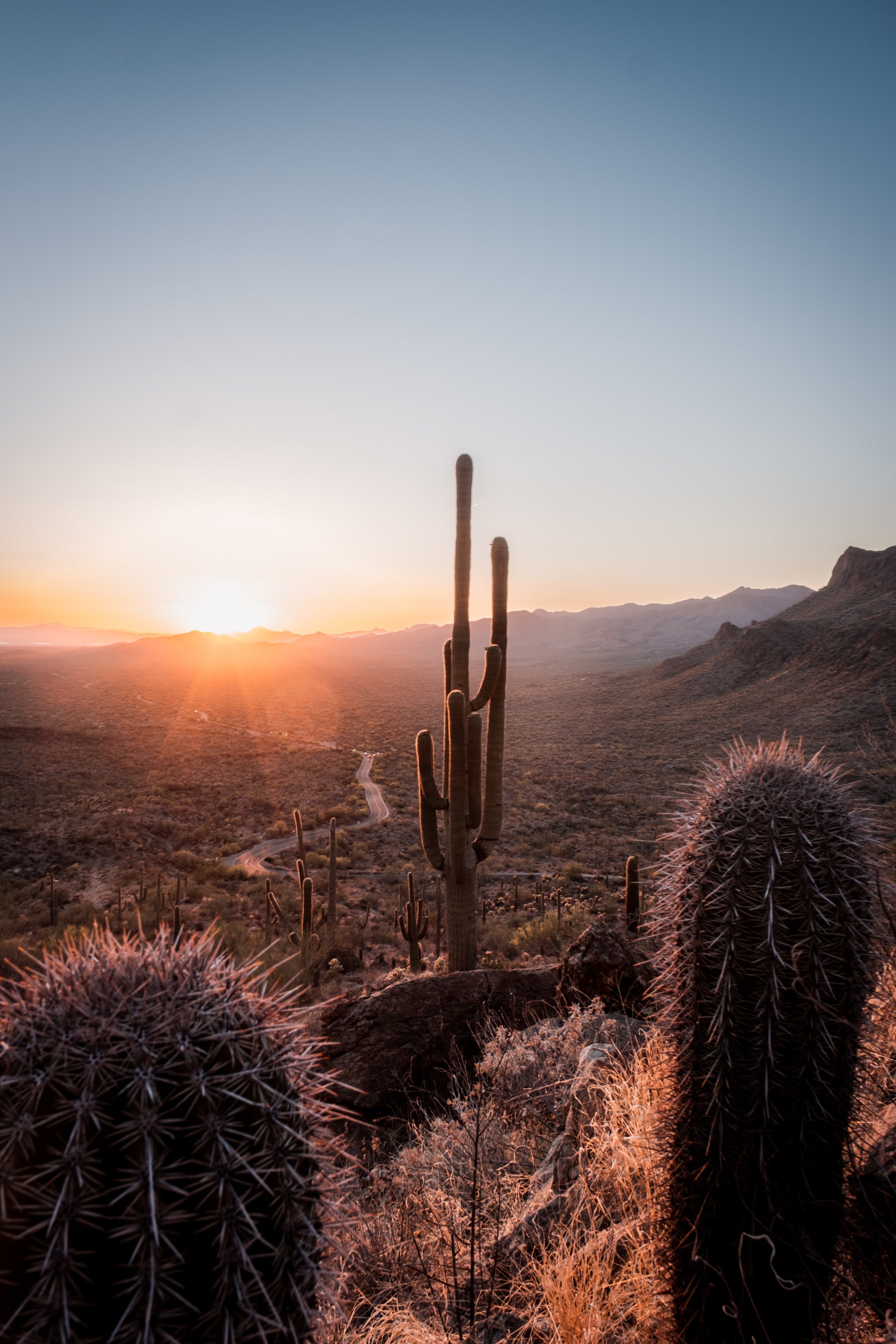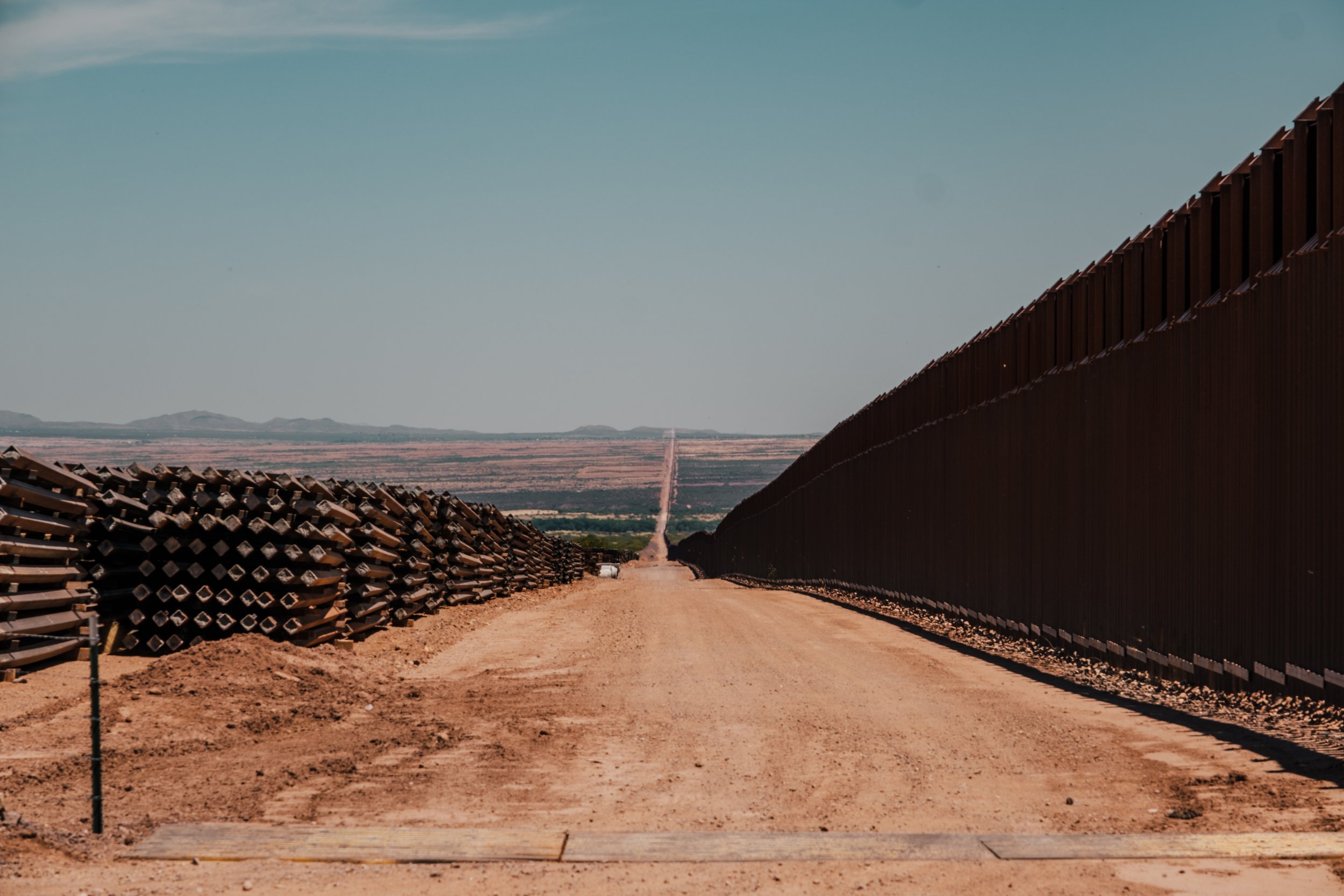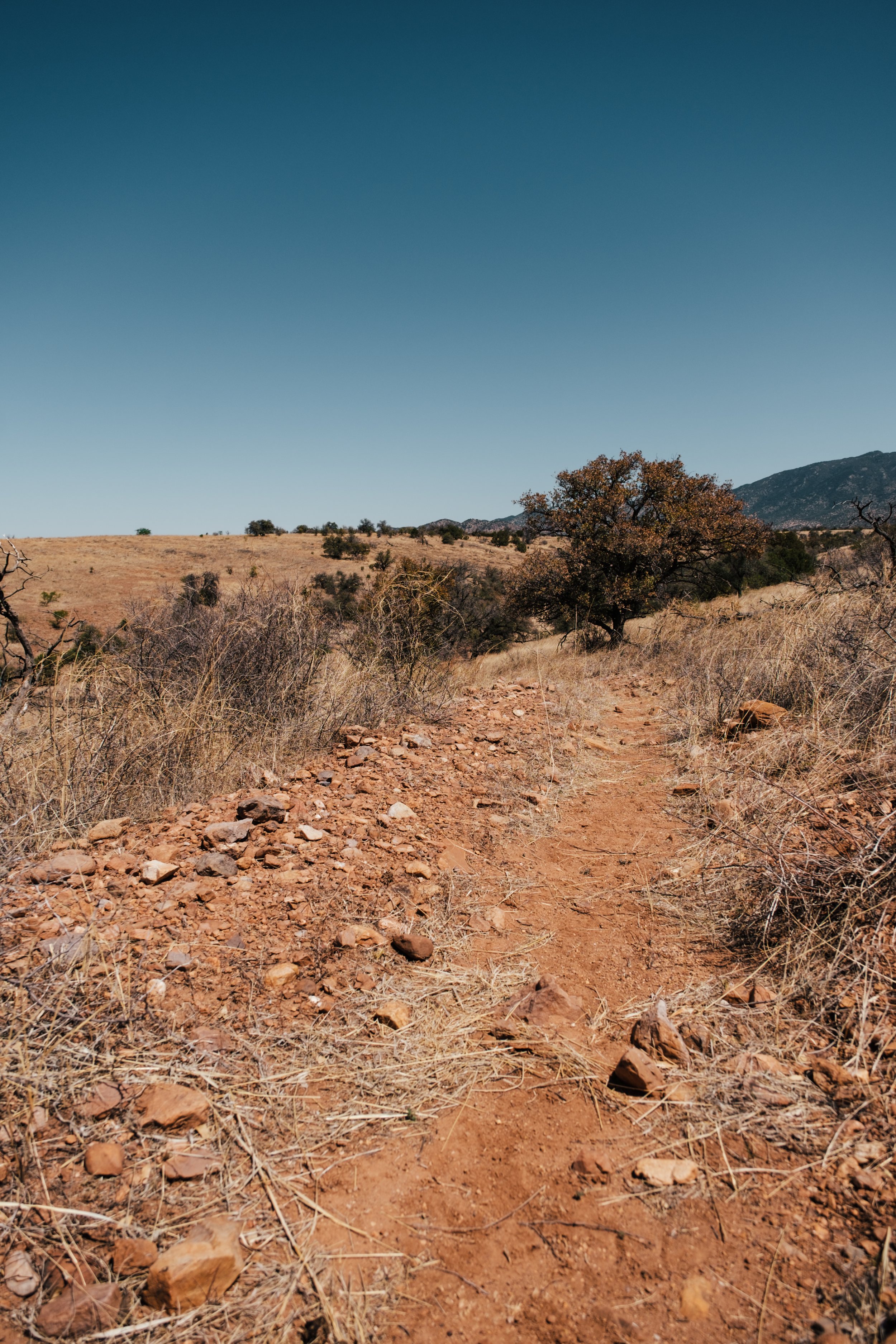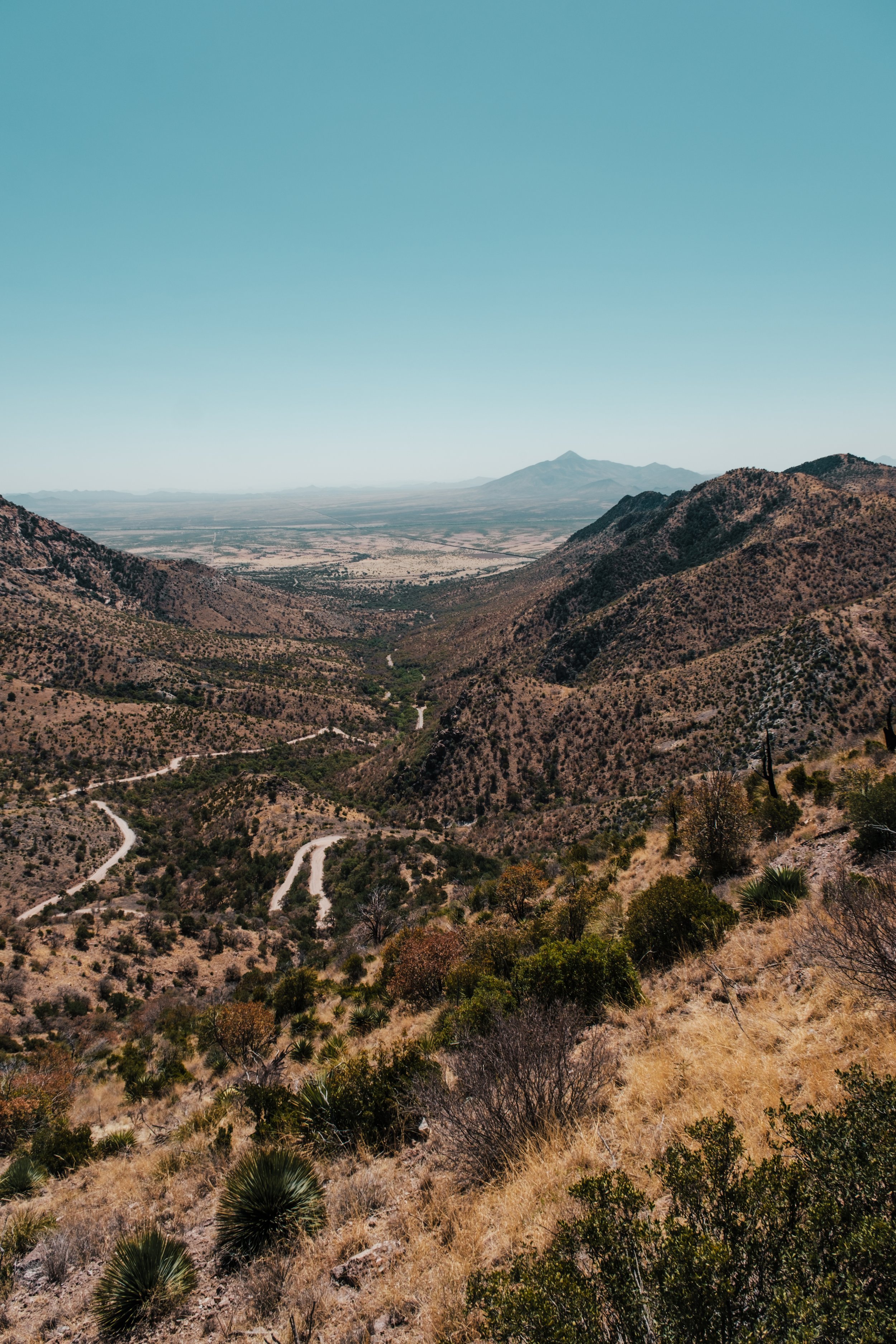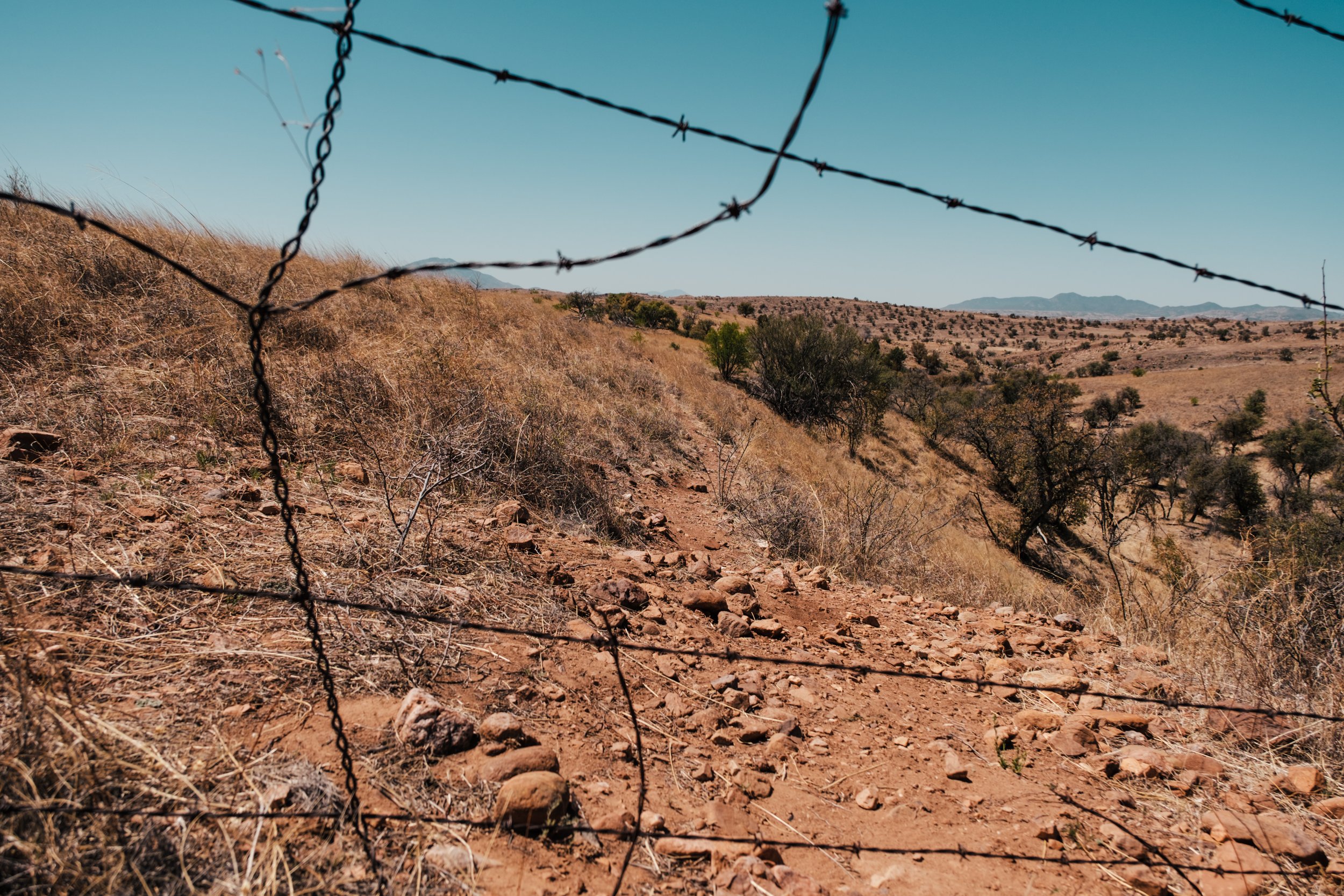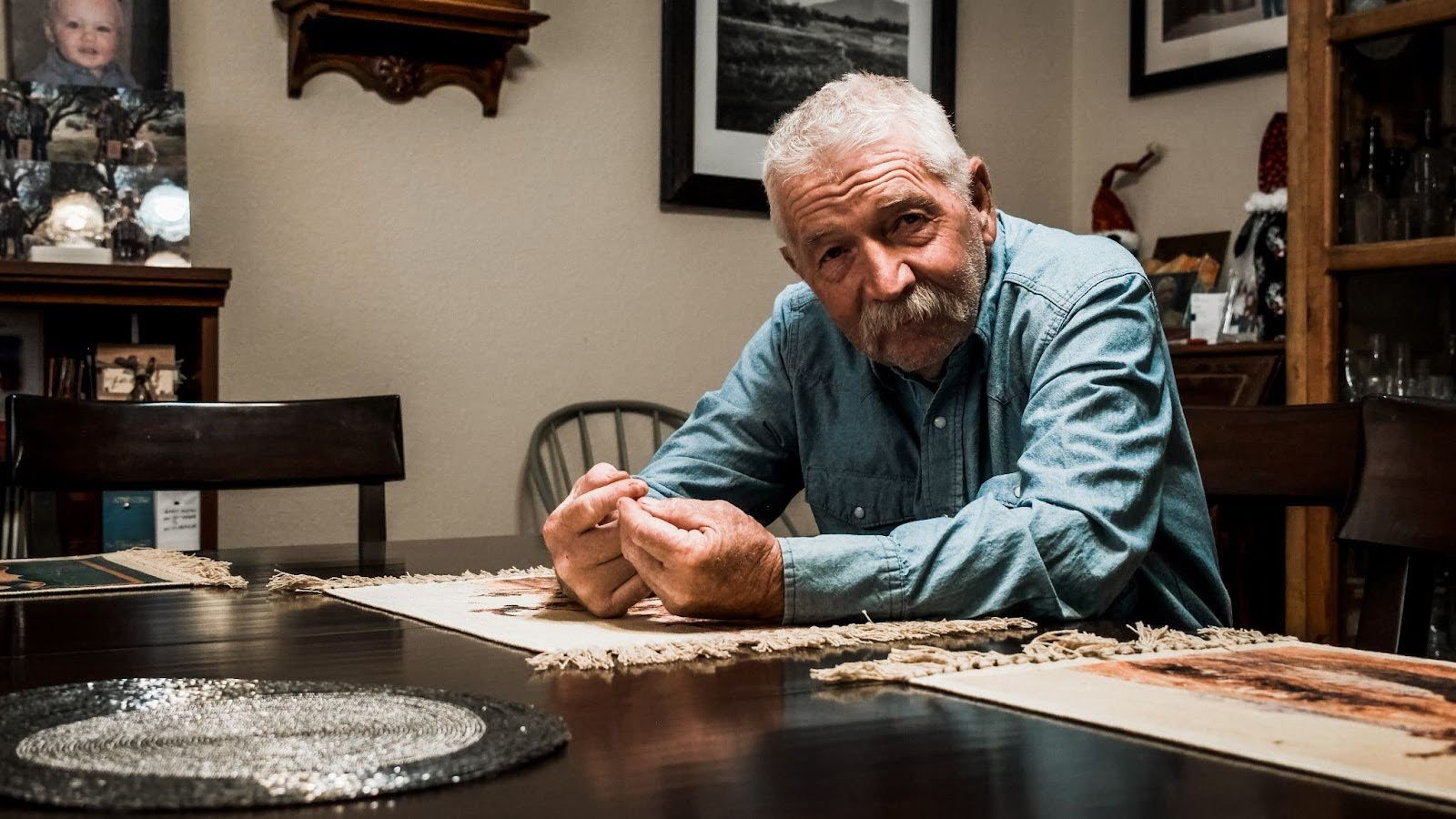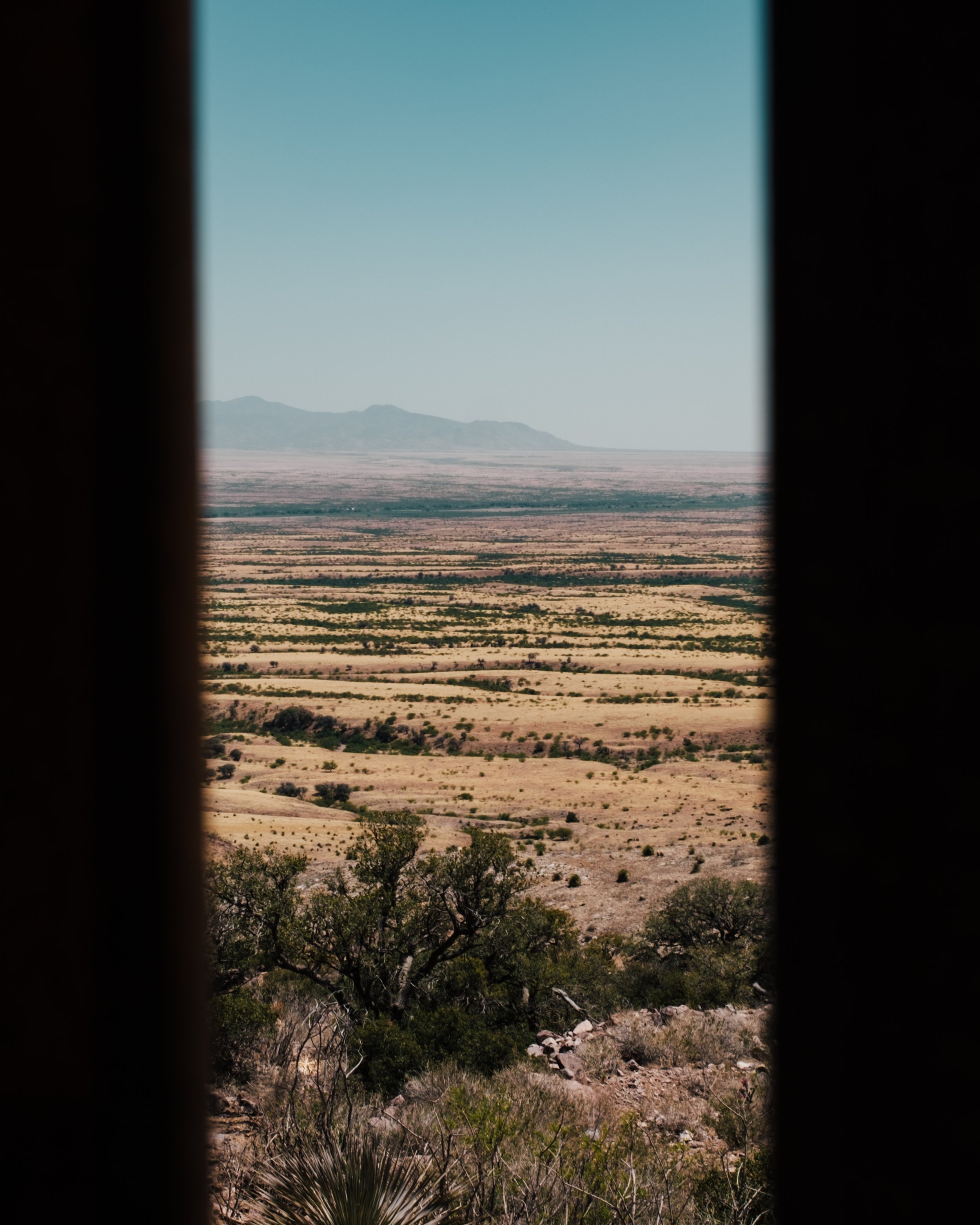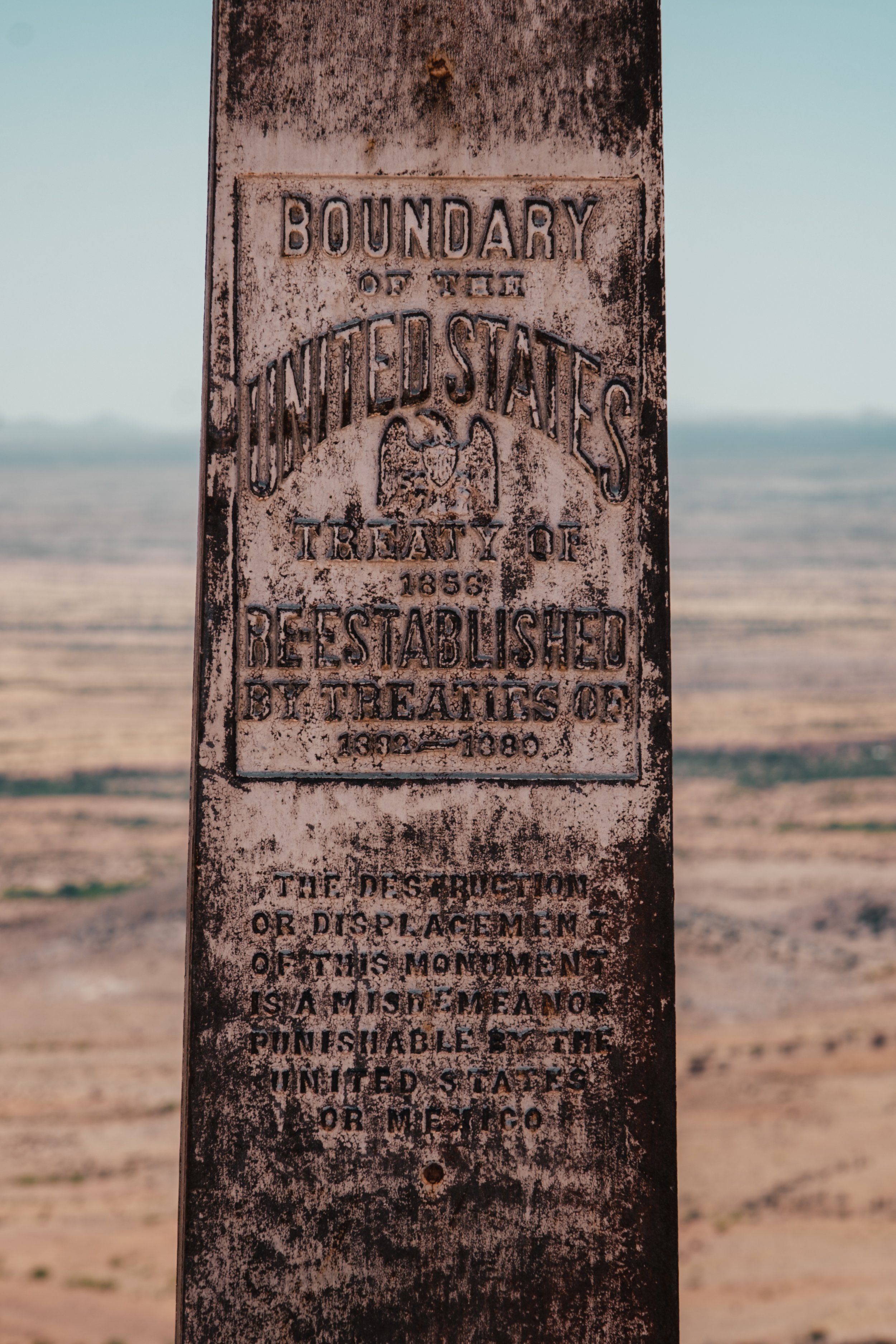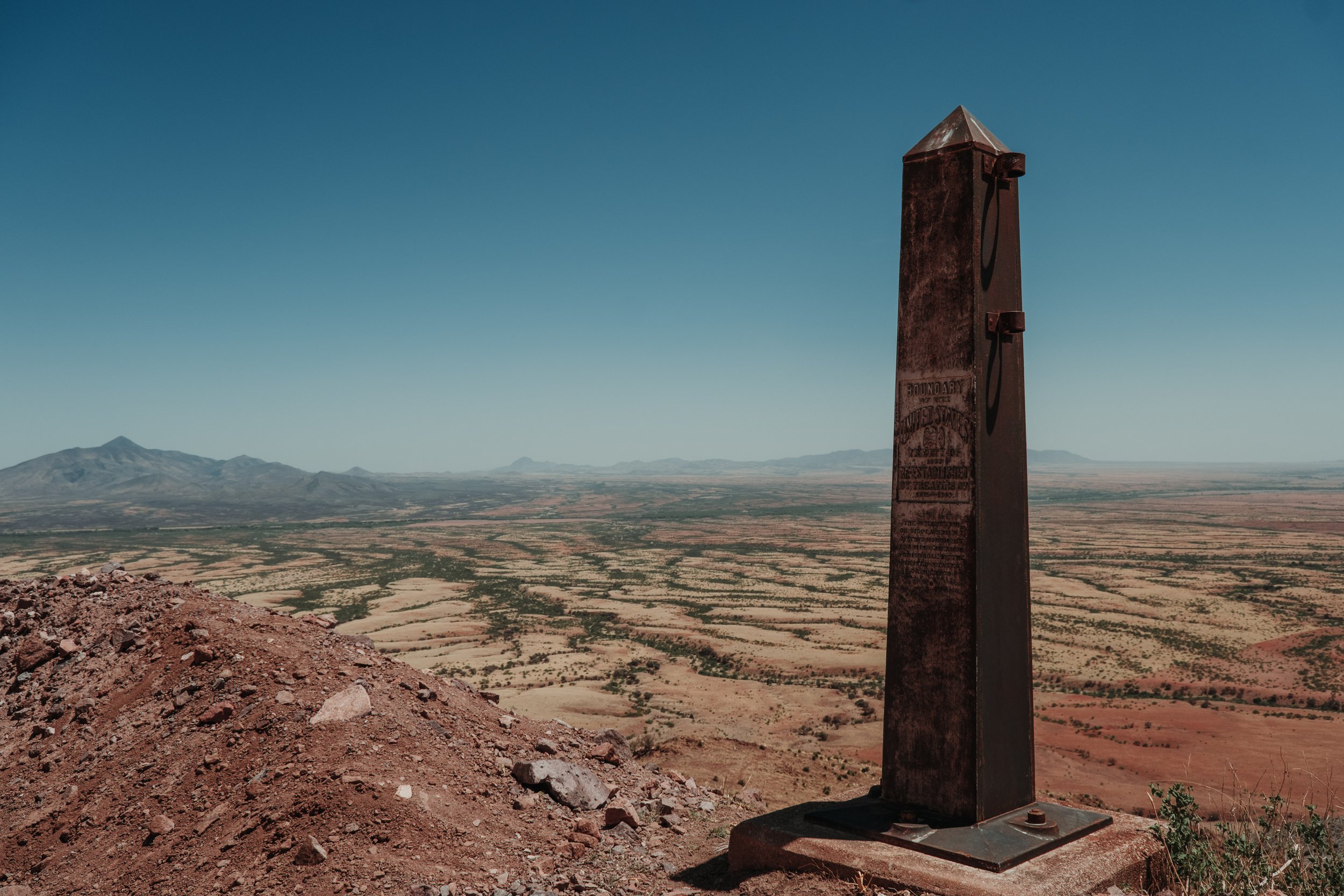
A Search For Truth:
The US Border Beyond Headlines
by Drew McDougall 2022
The U.S. and Mexican border is not only a divide between two countries, but has also created a divide between the beliefs of people within the U.S. alone. In May of 2022, my travels as a photographer led me to ground zero of a decades long political, social, and human rights issue in the United States.
By no means am I an expert in politics, the border, or any national issue; however, my time as a photographer has taught me that the first person perspective surmounts any form of research. Fortunately I was afforded such a perspective in Cochise County Arizona while following along with the Southeastern Arizona Border Region Enforcement Team (SABRE), a task force created to help manage the border crisis.
Upon arrival, I was given a briefing by the SABRE team of the Cochise County Sheriff's Office (CCSO). The first piece of information CCSO Sgt. Tim Williams gave was that, “Each area along the border is different from one another. They are controlled by different cartels and have different types of people coming across.”
I would soon realize just how important that bit of information was.
Specifically, Cochise County is the 38th largest county in the United States, covering 6,300 square miles with 83 miles of border and has parts both with and without the wall. My initial expectation consisted only of what I had seen on the news – groups of families and individuals flooding across to surrender themselves to the U.S. Customs and Border Protection (CBP) officers in search of a better life. However, Cochise County proved to be a much different situation.
“As for who crosses this area of the border, it is not exactly the images you see on the news,” Sgt. Williams stated, “and most of the people crossing here are military aged men either working for, indebted to, or are paying the cartel.”
“When is the best time to see people cross?” I replied. “Anytime,” Williams remarked.
After several ride-alongs and on-foot excursions Sgt. Williams would prove just how accurate that statement really was.
“In this area of border country, the Mexican side of the border is almost entirely controlled by the cartel” stated Williams.
For the cartel it is a business, with each immigrant paying upwards of $2000-$8000 dollars in some cases. This multimillion dollar industry - supported by three main pillars including human trafficking, drugs, and the constant management of illegal immigration - is operated in a way that rivals that of successful business ventures in the States.
Sgt. Williams identified scout lookouts and vantage points informing that, “they are always watching and waiting to communicate the best time to cross.”
Traces of camo backpacks and “booties” are signs from the well routed operations of the cartel guides that take people across, but on first glance there is never anyone in plain sight.
During a ride-along, the officers received a “hit,” or notification of a group in our area, which we pursued on foot. The terrain proved difficult to navigate, providing ample evidence as to how challenging it is to detect the well thought out movements of a cartel-guided group.
To put it in perspective, in May of 2022 alone, approximately 2200 illegal crossers were apprehended. More than 7000 were known to have crossed in, many others were never detected.
To this point Sgt. Williams explained that, “Without our camera system much of these immigrants would go completely undetected.”
The SABRE team has implemented an innovative game-camera system that automatically alerts their phones when immigrants are crossing the border illegally. When the camera captures an image, a “hit” is recorded and the officers are notified of the time, location, and the picture captured.
These camera traps are hidden extremely well, and with them the SABRE team's impact is impressive as they have been able to reduce the drug trade to a minimum with significant impacts on human trafficking as well.
images taken by SABRE Team cameras
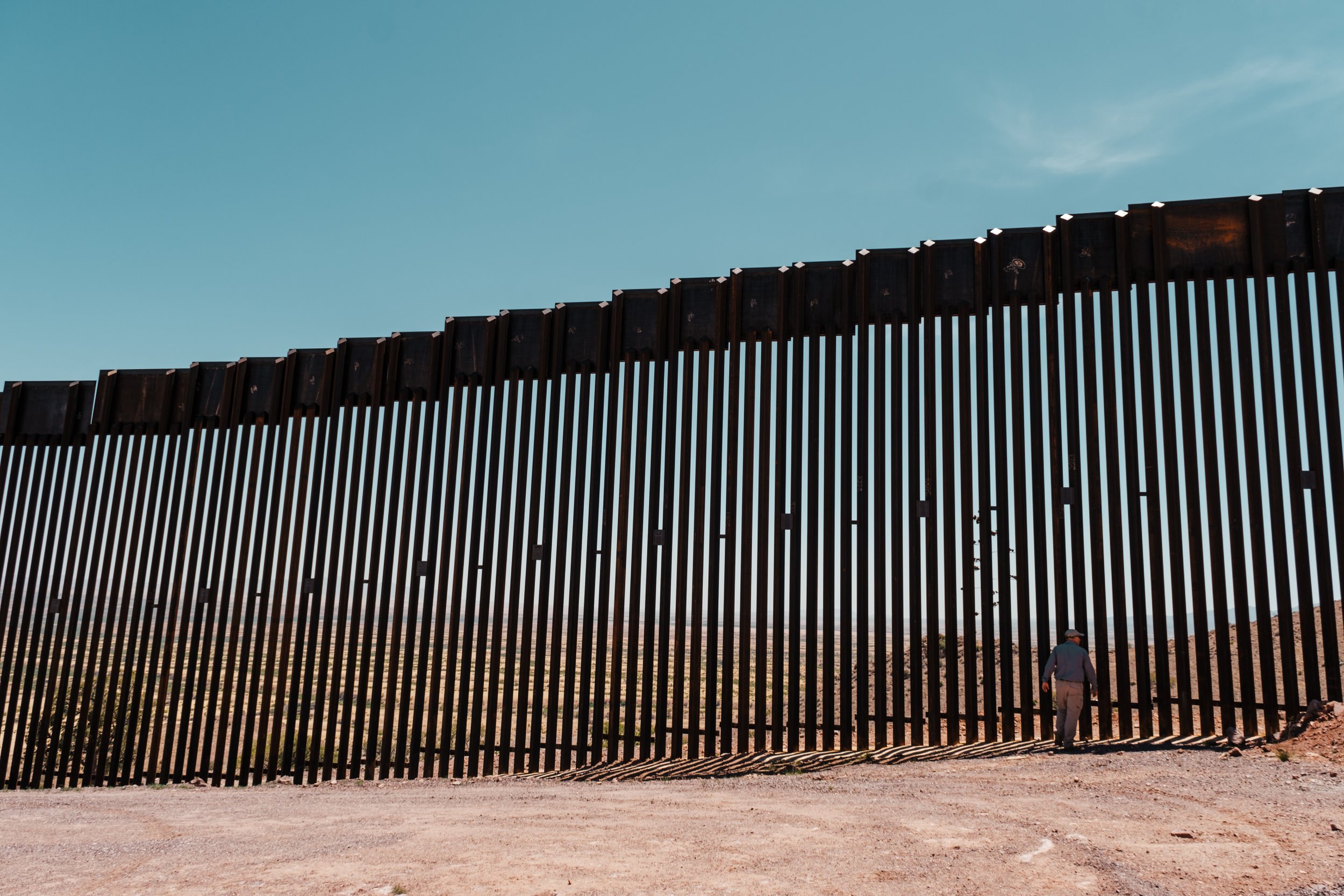
When approaching the wall, one can only think about its political baggage and the debates it has sparked. Its presence is quite ominous, looming twenty or thirty feet tall depending on what presidency it was constructed under, Obama or Trump respectively.
When asked about the wall’s effectiveness, Sgt. Williams explained that “the wall will not simply stop all illegal immigration and cartel influence, but it does hinder it and has many other benefits that go unnoticed.” From the infrastructure of roads and shelters, to lighting and much more, “many don’t understand what the wall brought for the people working in this area,” one that used to be, and still is barren and unforgiving.
Furthermore, with the understaffed front of Border Patrol, the wall does significantly slow down the amount of time it takes to cross the border illegally.
Despite the lack of a black-and-white answer to whether we should have a wall, Sgt. Williams does present the idea that people should think of the wall as mitigation rather than elimination.
Apart from the wall’s function, it is evident that the polarizing viewpoints of our political parties have left millions of dollars of materials wasting away (as seen above) alongside the incomplete areas where the wall stops. Whether the wall is continued or not, the sheer number of construction materials is hard to look at with many underdeveloped homes, buildings, and schools only a short drive away.
In contrast, Sgt. Williams showed how much of the border is untouched, with no discernable border at all. He gestured that “You can see in these parts, with no wall, tracks that look like hiking trails, but it's just the steady traffic of illegal immigration.” This emphasized the idea that as law enforcement in this area, “the wall most importantly stands as a signifier that you are breaking the law if you cross it, and that you know you are breaking the law.” Often, in the areas without a wall, anyone can simply claim they are lost and no punishment is given, cartel or not, so having a distinct barrier “makes it easier for us to enforce the law,” states Williams.
Perhaps the most informative perspective was gained during a conversation at the dining room table of John Ladd, a rancher whose family has lived and worked cattle along the border for many generations.
“My family has been here since 1894,” Ladd states, and “[illegal immigration problems] started … probably a year after Reagan gave amnesty. Then it just gradually started picking up and in 1990 it started getting bad.”
With such a long-term view and 10.5 miles of property along the border, Ladd’s words carry much weight, for “[Border Patrol] has caught half-a-million on our ranch in just thirty years,” he remarked, “And they were catching 1 in 6.”
During the ride-along mentioned earlier, we were able to apprehend a group along with Border Patrol. My initial thought when looking at the men, all 18-40 years of age, was empathy. However, none of them looked sad or distressed. This was due to the law in place at the time.
With regards to what happens after an illegal immigrant is caught, “It’s a catch and release” Ladd states. “Because of Title 42,'' he continued, an act put in place by the Department of Homeland Security to combat the COVID-19 pandemic, “They process [them] and if they don’t have a major criminal record they take them right back to Naco and deport them.”
Furthermore Ladd continued, “If they catch them in the morning they are going to come again that afternoon.” Even though the laws in place state they are given a misdemeanor on the first attempt and a felony on the second, when asked what the actual punishment was following apprehension, Ladd laughed, “Nothin.”
Currently, they are still preparing to end Title 42 and return back to Title 8, the original filing that law enforcement followed before COVID-19.
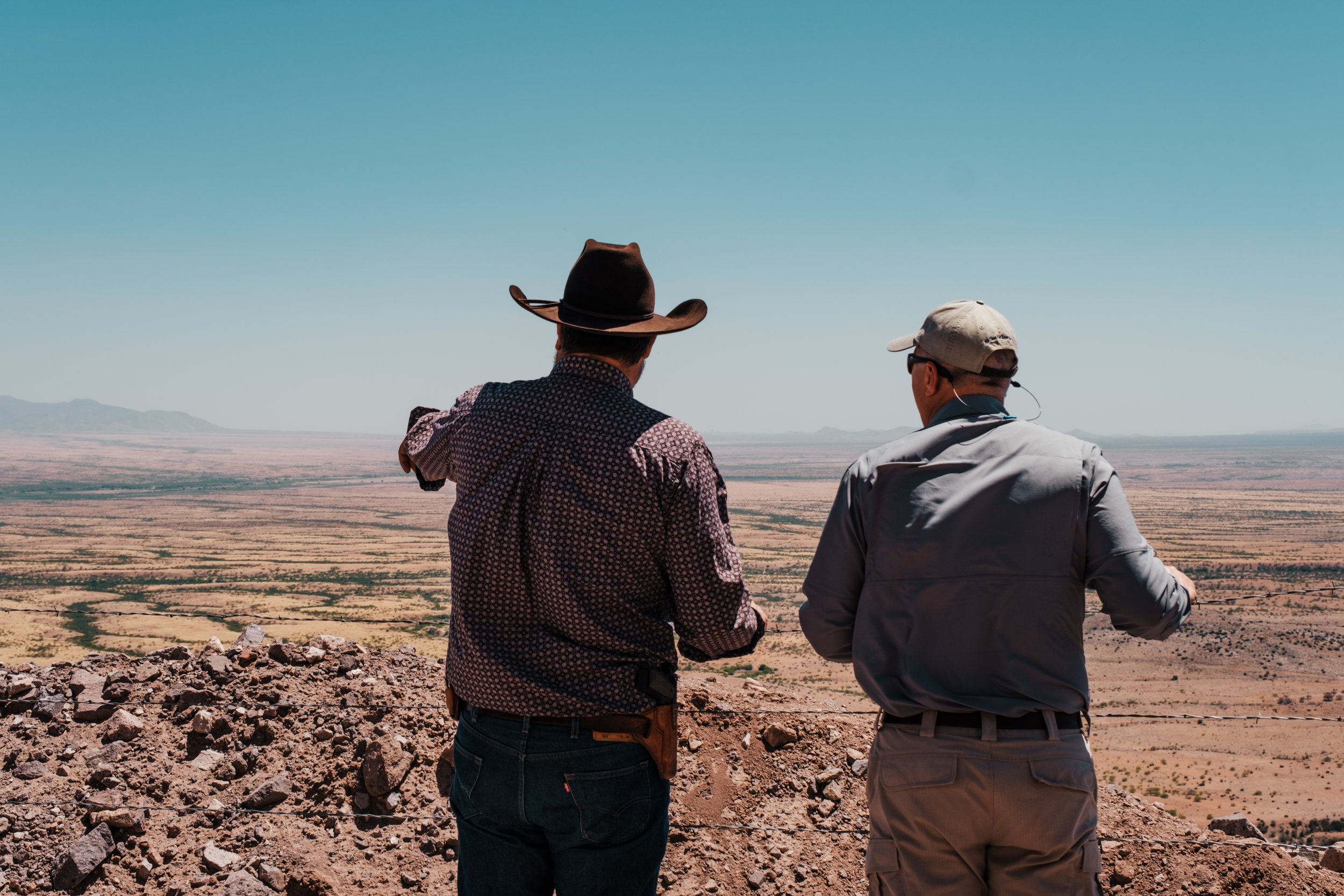
In speaking with John Ladd, it is obvious that he was living a different reality than I, making what was astonishing to me seem like the most matter-of-fact ordeal. When asked if he experienced break-ins and theft he responded, “Oh absolutely…Trucks, cattle, you name it.”
“Yeah, [we’ve even had] 15 dead bodies on the ranch,” as if it was something everyone had experienced.
Despite his losses, Ladd speaks fondly of SABRE Team, stating that “In about a four year time frame [they] had 54 full size trucks drive through the mesh fence on the border…full of dope to the highway. Border patrol had 250 agents and didn’t catch anything over four years. The SABRE Team [came] in with 5 guys in 6 months and shut it down. Five men, and shut it down.”
Ultimately understanding the experience of what people like John Ladd have been living through over the last 30-40 years is truly difficult unless you can see it with your own two eyes. My struggles to explain the intensity of this problem that continues to grip our country are cumbersome even under great reflection.
For individuals like myself, a resident of Florida, Sgt. Williams explained it much better than I would be able to.
Williams told me to imagine “You’re in your house in Florida. Imagine every night… people were jumping your backyard fence and trying to get in your house and the cops would chase them all around the house and take them back to the station and just let them go right away. And it happens every day.” Along with that, one encounters death, theft, and the resulting financial burdens and losses.
The problems occuring at the U.S. and Mexican border seem as though they will continue to plague our country for the years to come, but as we pine for solutions and form our opinions, situations like Cochise County will continue to prove just how much the public does not know. In a world where everyone has an opinion and can also share that opinion, searching for the factual truth and the details that come with it will become increasingly harder.
I also understand that writing this in 2022 means that certain circumstances will not apply, most certainly COVID-19, in the future years. Different people will take the reins and make decisions that decide the fate of those who live in these areas, and people will vote, argue, and debate over who those lawmakers should be.
Ultimately, I don’t have the answer as to how to solve the problem, but in my travels the one fact that became more clear than ever was that we need to start listening to the people who spend their lives where the situation is most critical. We need to stop assuming that we know what it's like without ever having lived it. We need to listen to those that have.



